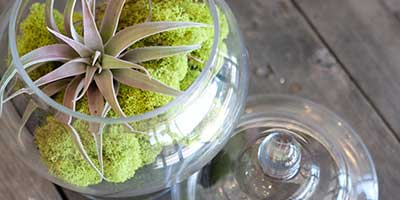Ghosts, witches, and cobwebs are everywhere. No, we’re not talking about being in a horror movie. This is everywhere because Halloween is almost here! While we here at KaBloom are hard at work creating pumpkin centerpieces and planning our costumes, we started wondering how Halloween became what it is today. So, we did a little research, and had a wickedly-good time finding what led to what we consider today to be Halloween!
The history of Halloween dates all the way back to about two-thousand years ago with the ancient festival of Samhain, a celebration by the Celts, who lived in the areas around the modern-day United Kingdom, Ireland, and France. In their culture, November 1st, as we know it now, was the beginning of their calendar year, but it was also the beginning of a long and cold winter. The Celts felt that, on the eve of their New Year, the dead spirits would return to Earth, and they believed that there were both good and bad sides of the dead’s return. They worried that they would cause trouble with their lives and their crops, but they also felt that the dead’s presence helps their priests foresee the future to give some comfort to the unpredictable world they were living in, as well as hope for what was to come after the winter. To celebrate, the Celts would host sacrificial bonfires for their gods. During these celebrations, the Celts would dress in costumes, mostly of animal heads and skins.
After the Roman Empire conquered the Celts, they merged their late-October celebration honoring the dead with Samhain. As Christianity began to spread, the Pope established All Souls’ Day (which later became All Saints’ Day), a day to honor the dead, and it was set to be celebrated on November 1st. People believe that the Church picked this day to overshadow the pagan celebration, but ironically celebrated All Saints’ Day with parades, bonfires, and dressing up in costumes. Sounds strangely like how Samhain was celebrated, doesn’t it? All Saints’ Day was also referred to as All-hallows, leading the day Samhain was celebrated on to be known as All-hallows Eve, which eventually became Halloween.
Halloween soon traveled to America, where it wasn’t too popular in New England because of the strict Protestant teachings. The Southern colonies began their own celebrations of Halloween, which celebrated the Fall harvest with parties where people would dance, sing, and tell ghost stories. As America became more populated, Halloween traditions became more common and widespread. English and Irish traditions influenced people to dress up in costumes to go door to door, asking for food or money, a nod to when the poor would go door to door in England, asking for food in return for praying for people’s deceased relatives. This practice evolved into today’s concept of trick-or-treat. Girls would also perform magic tricks, believing they would find their future husband’s name on that night. The practice of wearing costumes was also originally a way people believed they could hide from evil spirits that rose from the dead on All-hallows Eve as they went out at night. As the years went on, Halloween became more and more secular, as well as centered on the community, which meant that parades and parties were on the rise, as well as the continual development of trick-or-treating.
Bet you’re going to be thinking a little different about dressing in costumes and going out trick-or-treating after what you just read! It’s so interesting how so many cultures were combined to create what we see as a simple yearly event. Getting free candy and celebrating with friends is almost as fun as learning how we got here (actually, it’s the other way around). Have a happy Halloween, and stay tuned for more updates!















I had not expected this kind of innovation with the help of flowers. All are awesome. Hats Off and best wishes from Meenakshi Singh